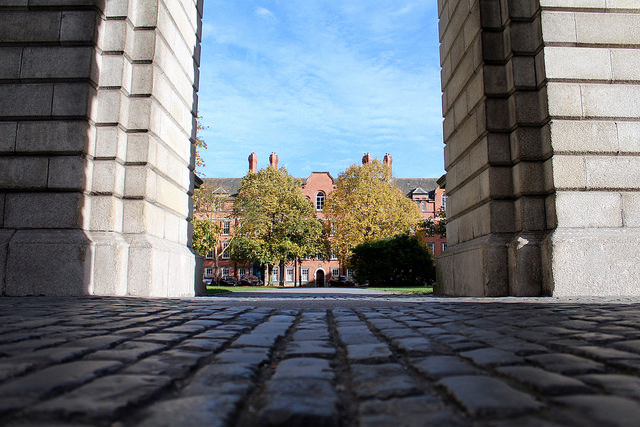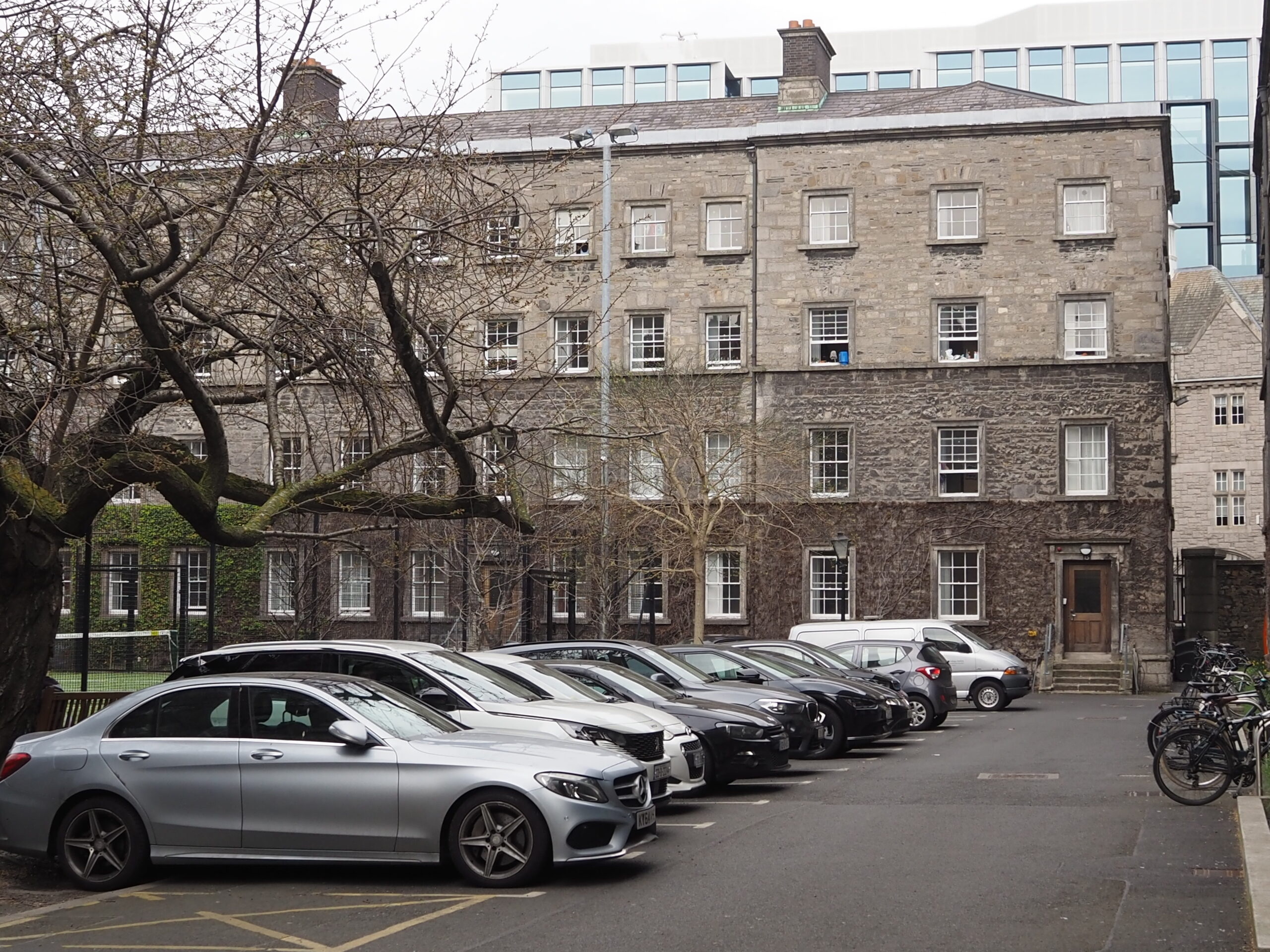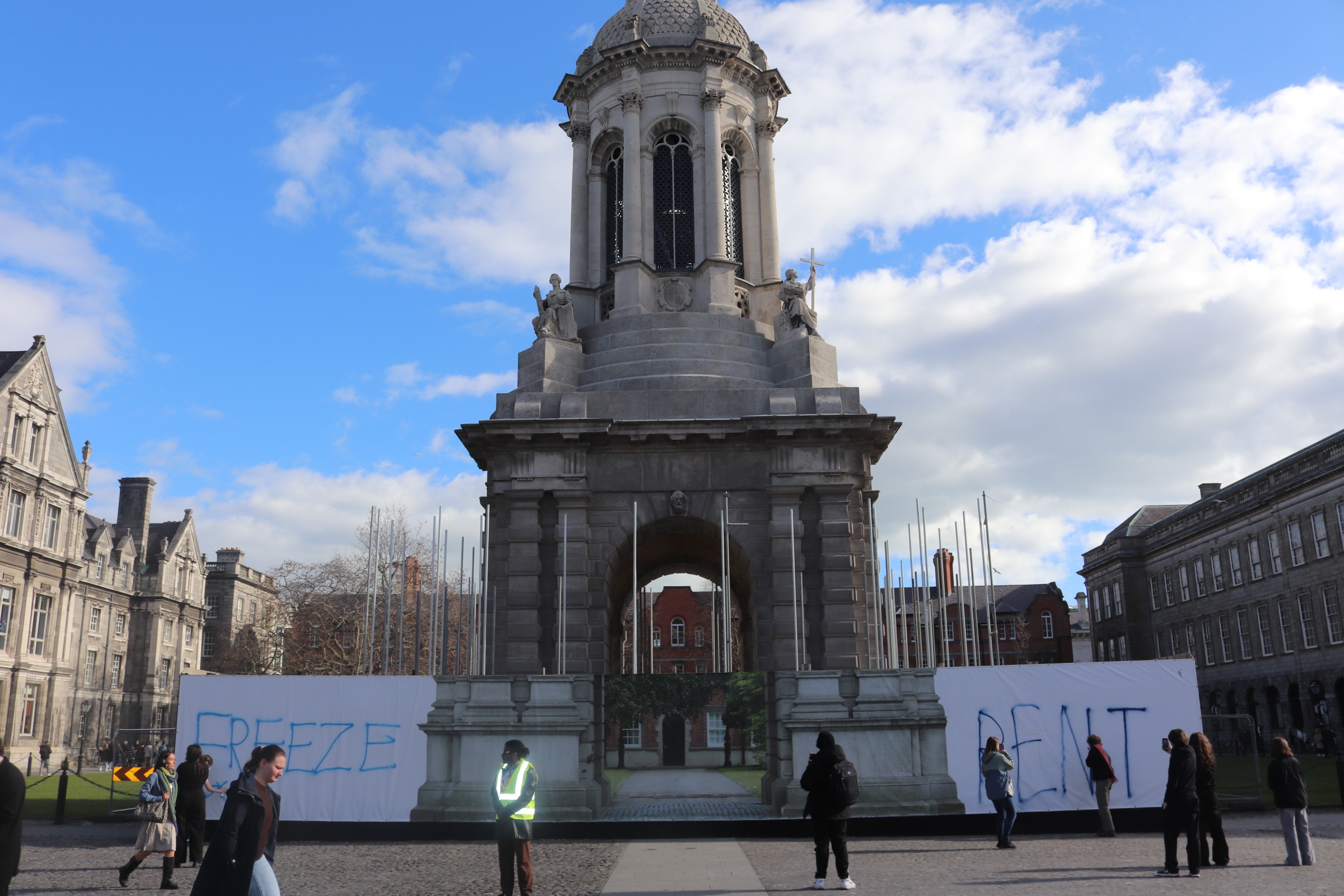A new levy on students to contribute to the cost of Trinity’s infrastructure is currently being considered by College, The University Times has learned, as part of a “radical” approach to fundraising.
In a document submitted to Trinity’s Finance Committee on October 26th, the committee members were asked to consider the possible introduction of an annual student infrastructure contribution for undergraduate students.
The document, which was submitted to the committee by Trinity’s Chief Financial Officer, Ian Mathews, contains a number of “income generation strategies” to raise funds for Trinity relating to a number of areas, including the Commercial Revenue Unit, Trinity’s Global Relations Strategy and undergraduate fee levels.
During discussions of the levy, the committee asked Mathews to explore the option of a levy on students to help fund the cost of maintaining Trinity’s infrastructure. The document notes that the Finance Committee instructed Trinity’s Director of Public Affairs and Communication, Tom Molloy, to look at how the university might “communicate the message that Trinity has unique needs due to the distinguishing factors of a Trinity education”. College’s Financial Services Division was also asked to develop a number of models looking at how much various levy amounts might impact on Trinity’s income.
Infrastructure costs, which are one of the largest costs Trinity faces annually due to its age, are currently not covered by the Higher Education Authority (HEA).
Any additional contribution would likely raise fees for students studying in Trinity above those in other colleges and universities across Ireland. Students who qualify for free fees currently pay €3,000 in the student contribution fee, which is set by the government, as well as the €120 Sports Centre levy and €8 Union of Students in Ireland (USI) levy.
In an email statement to The University Times, Mathews acknowledged that the Finance Committee, which is chaired by Provost Patrick Prendergast, had asked him to “explore” an annual student levy.
Mathews declined to give any indication of the size of such a levy: “I’m sure you can understand it would be premature for me to speculate on whether this concept might see the light of day and what the size of any potential contribution might be.”
Mathews noted that, at a meeting of Finance Committee on November 22nd, Trinity’s Financial Services Division presented financial scenarios to show the “impact of different annual infrastructure contributions that could fund campus renewal”. The draft minutes from the committee meeting will be considered at the next meeting of the College Board on December 14th.
At its meeting in October, Finance Committee also discussed the new Trinity Business School’s potential for raising income in the future. The level of state funding Trinity receives has fallen dramatically in recent years and Trinity has been working to supplement its income from non-state sources, including philanthropy and commercialisation. In 2011, Trinity received 70 per cent of its funding from the state. Since then, that figure has fallen to 43 per cent.
In September, The University Times revealed that, according to a document submitted to the College Board on June 22nd, the Comptroller and Auditor General expressed fears over Trinity’s financial stability. Financial estimates for the 2015/16 year indicate that Trinity will post a €34 million deficit. The majority of this deficit will come from the depreciation of Trinity’s assets, such as the university’s infrastructure.
€18 million of this forecasted deficit comes from a net depreciation of the College’s assets. Speaking to The University Times in September, Mathews acknowledged that “people can argue that that’s not a real cash cost, but nonetheless it is the cost of our infrastructure, and you have to recognise it in terms of overall financial sustainability of our organisation”.
Such a levy is likely to face resistance and criticism from students if it was ever to be introduced. In an email statement to The University Times, Trinity College Dublin Students’ Union (TCDSU) President, Kieran McNulty, described the concept as a “retrograde” step.
“This is simply a fee no matter how it is guised – it is a fee to balance College’s books”, he said. “A charge such as this would definitively stop this aim and really make Trinity a college for the elite. To charge students for essentially the upkeep of buildings would be unfair. There is no service obtained from this.”
McNulty, who is a member of Finance Committee, promised that TCDSU would “fight against this idea” if it was ever acted upon by College.
These concerns were echoed by Graduate Students’ Union (GSU) President, Shane Collins, in an email statement to The University Times. Collins, who also sits on Finance Committee, said: “It concerns me that if a measure of this nature was ever introduced here in Trinity, other higher education providers may follow suit – which would have severe repercussions for representation of underrepresented groups right across the higher education system.”
While Collins described it as “baffling” that government funding is not provided to universities for the redevelopment and improvement of campuses, he emphasised that the money for such projects must come from “non-student sources”.
The levy has already been criticised by a member of the Oireachtas Education and Skills Committee. Speaking to The University Times, Senator Lynn Ruane, who served as TCDSU President last year, acknowledged that, while a levy was still only being discussed, the consideration of such an increase was a “negative” move.
Ruane said any increase would affect middle earners the most: “I think this is a moment where the access students and the middle income earners should come together to oppose any such move.”
In an email statement to The University Times, Trinity Senator Ivana Bacik, who is also Reid Professor of Criminal Law, Criminology and Penology in Trinity, added that she would be “very concerned about any proposal to increase charges or fees on students”.
Such an approach, if introduced by Trinity, would be the latest indication of the severe challenges facing the Irish higher education system and would be the culmination of months of warnings from Trinity and other universities about the dangerous impact such underfunding is having on the sector.
In an address to staff and students in October marking the midpoint of his term as Provost, Prendergast said: “Government funding is not a decision that we have direct control over. It’s ultimately a nettle that they have to grasp.”
In the same speech, Prendergast outlined the “creative” approaches Trinity had been forced to take to address the decline in state funding, indicating that “fees, philanthropy and commercial activities” would be crucial to the survival of the university over the coming years.
Since 2011, these “creative” solutions have included the creation of the College’s first large-scale integrated funding campaign, under the guidance of the newly formed Campaign Cabinet, as well as a renewed focus on developing Trinity’s reputation as a tourist attraction.
A levy, if introduced, would not be the first time the College has tried to source income from students. In March 2015, the Board approved a set of student charges, which included a €20 charge for the replacement of student cards, an increase in the postgraduate application fee from €35 to €55 and the standardisation of the charge for duplicate degree parchments to €105.
The Oireachtas Education and Skills Committee is currently considering a report by the government’s higher education funding working group. The report, commonly referred to as the Cassells report after the group’s chair, Peter Cassells, outlined three options for the funding of higher education – the abolition of the student contribution and the creation of a predominantly state-funded system, the continuation of the current student contribution charge coupled with increased state investment and the introduction of an income-contingent loan system.
Minister for Education and Skills, Richard Bruton, has said he hopes that a decision on a new funding model can be made by the next Budget.







